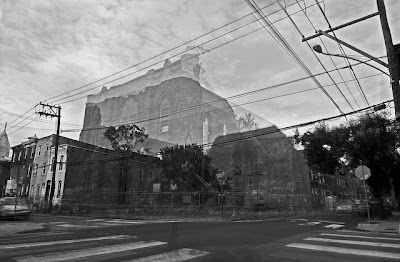I want need an iPad, ‘cos…
It’s not often that a film precedes a book, but it happened
with the Academy Award winning animated short film for all bibliophiles – ‘The
fantastic flying books of Mr Morris Lessmore’. The story follows reader and
writer Morris Lessmore and his custodianship of a magical library of flying
books. It was created using miniatures, computer CG & stop-motion animation,
and traditional hand-drawn techniques.
 |
| Wonderful quirky work with books |
There is also an iTunes app by Moonbot Studios (Moonbot is the
storytelling and animation collective co-founded by Joyce) to accompany the
book/film, which as iTunes states “blurs the line between picture books and animated
film”.
 |
| From the app which lets you draw, play piano & more |
‘The fantastic flying books of Morris Lessmore’ is a story of people who devote their lives to books and books who return the favour.
Morris Lessmore is a poignant, humorous allegory about the curative power of
stories and how they can positively affect our lives.
 |
| The real book |
William Joyce began working on the story in 1999, as a
tribute to the late Bill Morris the soft-spoken, dry-witted pioneer of library
promotions. The hurricane Katrina devastated Joyce’s home state and interrupted
the story’s progress. Joyce saw firsthand the curative power of stories when he
visited displaced children reading donated books in the shelters.
 |
| Setting the scene - stop-motion miniature |
And even better, the story has also been released as an
augmented reality app by Moonbot Studios, the IMAG•N•O•TRON,
which brings the pages of the book to life!
It starts with a real or digital book! Once you have your copy of ‘The fantastic flying books of Mr. Morris Lessmore’, users can view the picture book through the IMAG•N•O•TRON app using an iPad 2/3 or iPhone 4+ camera, you get swept up in a storm, Humpty Dumpty befriends you and you get a sneak peek into a part of Lessmore’s world not shown in the book or movie. Check it out on this Vimeo video -
See the IMAG•N•O•TRON in action! from Moonbot Studios on Vimeo.
To download the IMAG•N•O•TRON app
Integrating such innovative and exciting technology with
books is awesome and awe-inspiring – what's next?
I believe it says something profound that a short film and
app are about the preciousness of the paper book.










.JPG)


.JPG)
.JPG)
.JPG)
.JPG)
.JPG)



























.JPG)

.JPG)
.JPG)
.JPG)
.JPG)
.JPG)
